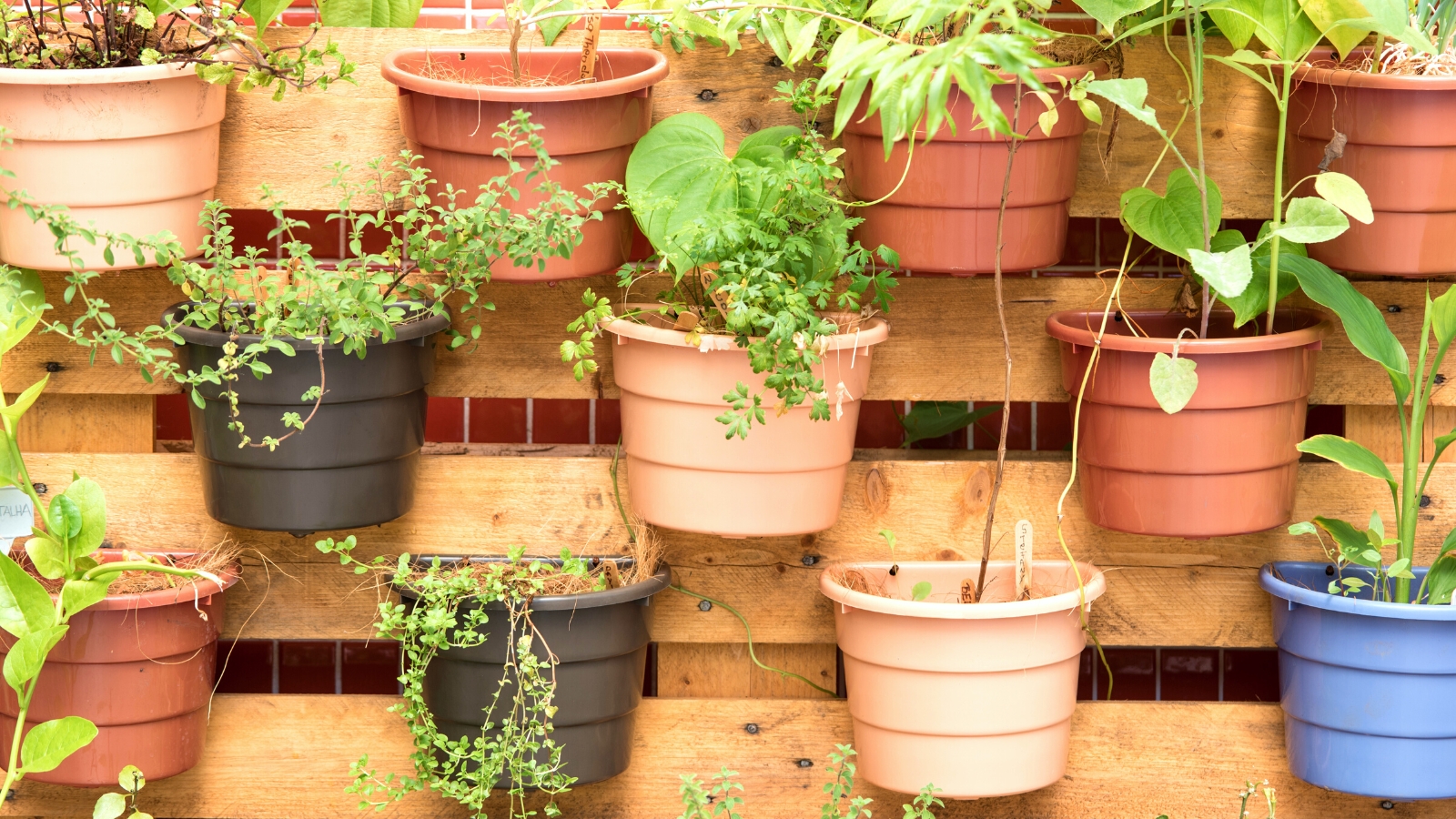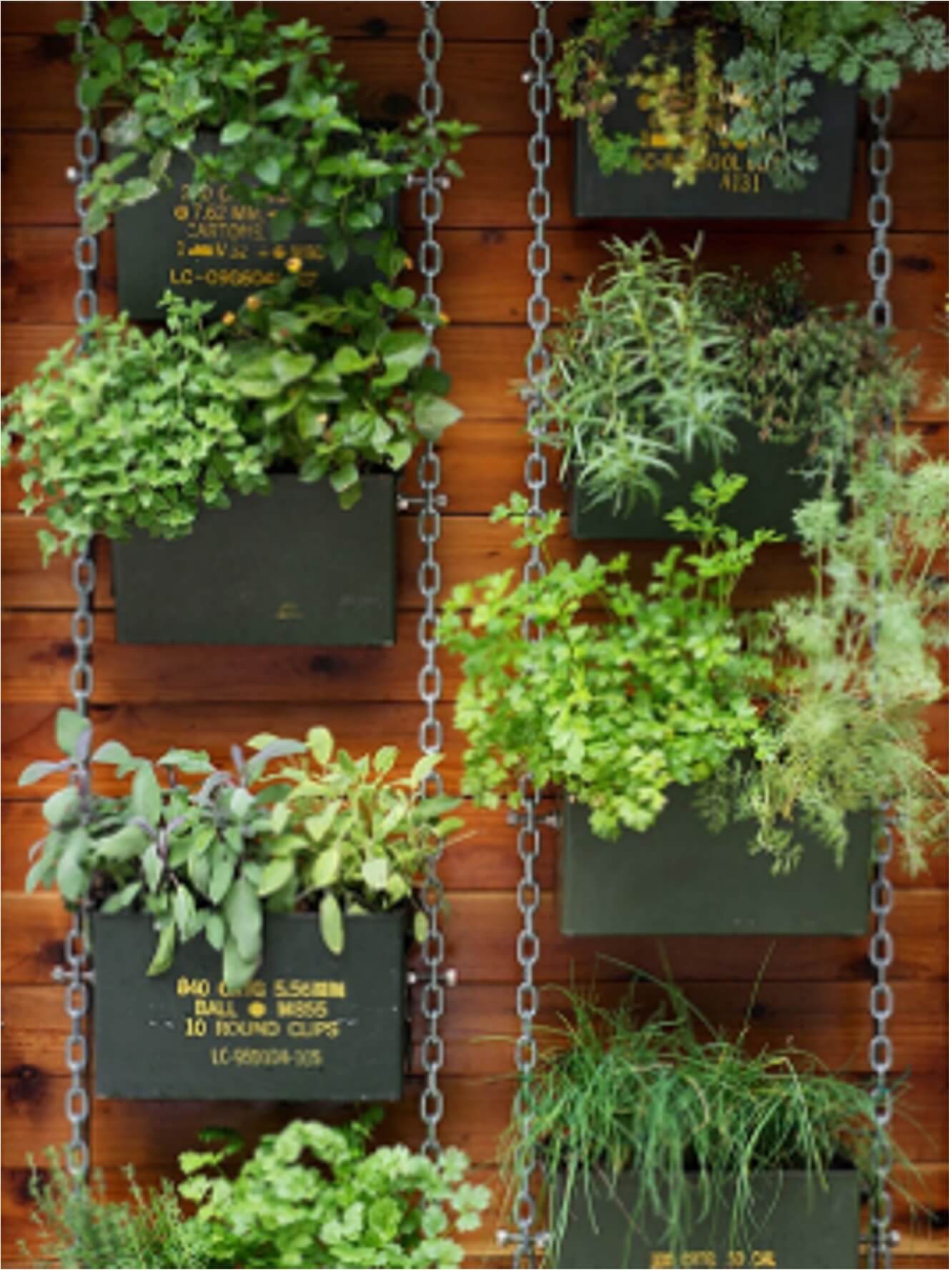If you’ve always dreamt of having your own lush garden but have limited space, then you’re in luck! This article is here to show you some amazing vertical gardening hacks that will help you make the most out of your small space. Say goodbye to cramped yards or tiny balconies that limit your green thumb ambitions. With these space-saving solutions, you’ll be able to create a stunning vertical garden that not only maximizes your space but also adds a touch of natural beauty to your surroundings. Get ready to transform your limited space into a thriving oasis with these vertical gardening hacks!
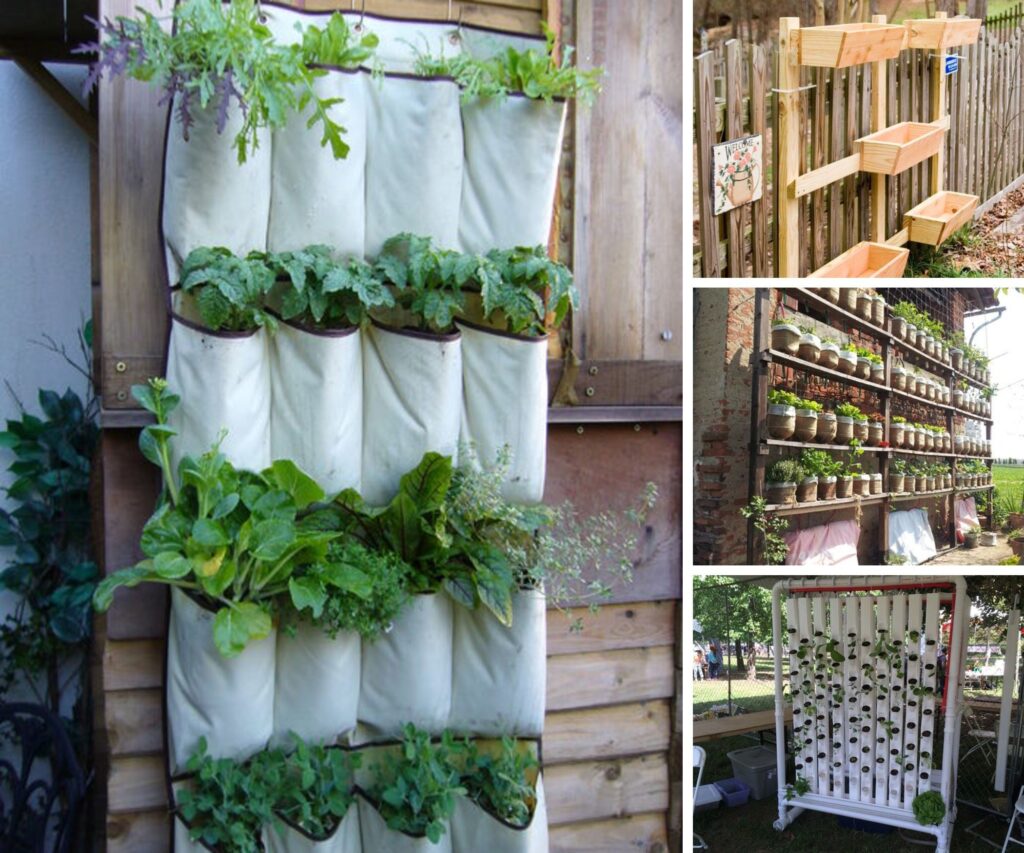
This image is property of content.instructables.com.
Choosing the Right Plants
When it comes to vertical gardening, choosing the right plants is crucial for the success of your garden. One important factor to consider is the size and weight of the plants. Since vertical gardens rely on structures to support the weight of the plants, it’s important to select plants that are not too heavy or bulky.
In addition to size and weight, you should also choose plants that thrive in vertical environments. Some plants are better suited for vertical gardening because they naturally have a more upright growth habit. These plants are more likely to adapt well to the vertical structure and can easily be trained to grow upwards.
Lastly, it’s important to choose plants with similar watering and sunlight needs. Since vertical gardens are often comprised of multiple plants in close proximity, it’s important to select plants that have similar requirements. This will help ensure that all plants in your vertical garden receive the right amount of water and sunlight, promoting healthy growth and preventing any plants from overshadowing others.
Creating a Vertical Garden Structure
Once you’ve chosen the right plants, it’s time to create a vertical garden structure that suits your space and needs. There are several options to consider:
Selecting the Appropriate Vertical Gardening System
There are various vertical gardening systems available in the market that can provide a convenient and efficient way to grow plants vertically. These systems typically consist of modular panels or pockets that can be attached to walls or freestanding frames. They allow for easy planting, maintenance, and rearrangement of plants as desired.
Building a DIY Vertical Garden Using Recycled Materials
For those who enjoy a hands-on approach or are on a budget, building a DIY vertical garden using recycled materials can be a great option. You can repurpose materials such as pallets, gutters, or even old shoe organizers to create your own unique vertical garden structure. Not only is this an environmentally friendly option, but it also allows for customization based on your space and aesthetic preferences.
Utilizing Wall-Mounted Planters
Wall-mounted planters are another popular option for vertical gardening. These planters can be easily installed on walls or fences, creating a beautiful and space-saving display. They come in various sizes and designs, allowing you to mix and match different plants for a visually appealing vertical garden.
Installing a Hanging Garden
Hanging gardens are a versatile option for vertical gardening, and they work especially well in small spaces or when you want to add greenery to areas such as balconies or porches. By suspending pots or baskets from ceilings or overhead structures, you can create a stunning vertical garden that adds a touch of beauty to any space.
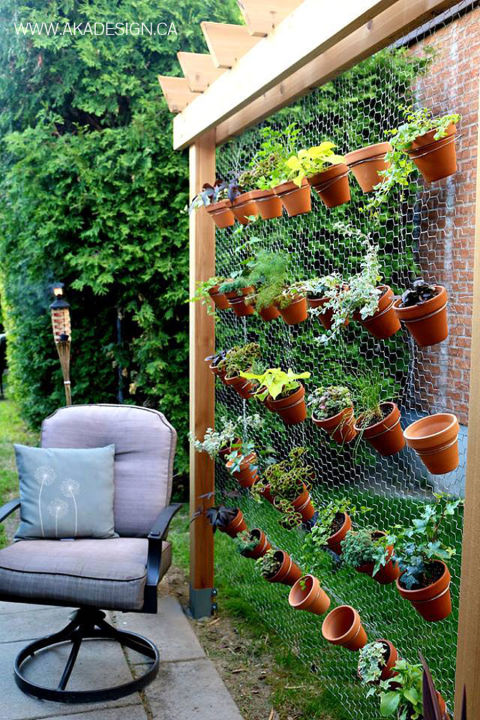
This image is property of blessmyweeds.com.
Maximizing Space with Vertical Gardening
One of the primary benefits of vertical gardening is the ability to maximize space, especially in areas where horizontal space may be limited. Here are some ways to make the most of your vertical garden:
Utilizing Vertical Space on Fences and Walls
Vertical gardening provides an excellent opportunity to utilize the often overlooked space on fences and walls. By attaching planters or using hanging baskets, you can transform a plain wall or fence into a lush, green backdrop. This not only adds visual interest but also helps to maximize the available growing area.
Using a Trellis or Lattice for Climbing Plants
Climbing plants are perfect for vertical gardening, as they naturally grow upwards and require support. By incorporating a trellis or lattice into your vertical garden, you can provide a structure for climbing plants to grow on. This not only saves space but also adds a beautiful element of height and texture to your garden.
Growing Plants Vertically Indoors Using Shelves or a Plant Stand
Vertical gardening is not limited to outdoor spaces. You can bring the beauty of vertical gardens indoors by utilizing shelves or a plant stand. These can be placed against a wall or in front of a window, allowing you to create a stunning display of plants and maximize your indoor gardening space.
Creating a Vertical Herb Garden in the Kitchen
Vertical herb gardens are a practical and space-saving solution for anyone who loves cooking with fresh herbs. By installing a vertical garden in your kitchen, you’ll have easy access to herbs while also adding a touch of green to your culinary space. You can use wall-mounted planters or hanging baskets to create a convenient and visually appealing vertical herb garden.
Optimizing Watering and Irrigation
Proper watering is essential for the health and growth of your vertical garden. Here are some tips to optimize watering and irrigation:
Installing an Automated Drip Irrigation System
An automated drip irrigation system can be a game-changer for vertical gardens. It delivers water directly to the plants’ roots, which minimizes waste and ensures that each plant receives the right amount of water. With a programmable timer, you can easily set the system to water your vertical garden at specific intervals, taking the guesswork out of watering.
Using Self-Watering Planters
Self-watering planters are a convenient option for those who may have limited time for watering or are new to gardening. These planters have built-in reservoirs that hold water, allowing the plants to draw moisture as needed. This helps to maintain a consistent level of moisture in the soil, promoting healthy plant growth.
Creating a Reservoir System for Watering
If you prefer a DIY approach, you can create a reservoir system for watering your vertical garden. This can be done by attaching water storage containers or pipes to the structure of your vertical garden. Gravity will allow the water to slowly drip or flow to the plants, providing a continuous supply of moisture.
Implementing a Misting System for Delicate Plants
Some plants, particularly those with delicate foliage, benefit from a misting system. This can be achieved by attaching misting nozzles or sprayers to your vertical garden structure. A misting system provides a fine spray of water, which helps to hydrate the plants without saturating the soil.
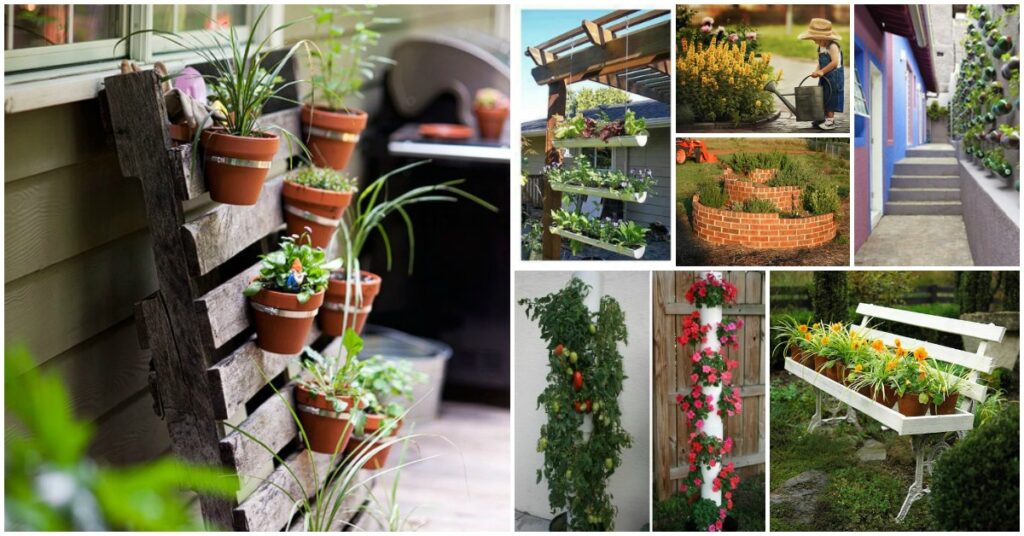
This image is property of cdn.diyncrafts.com.
Managing Soil and Fertilization
Proper soil and fertilization are crucial for the health and productivity of your vertical garden. Here are some tips to help you manage soil and fertilization effectively:
Choosing the Right Type of Soil or Potting Mix for Vertical Gardens
Using the right type of soil or potting mix is essential for vertical gardens. A lightweight and well-draining soil mixture is recommended, as it allows for proper root development and prevents waterlogging. You can choose from a variety of commercially available potting mixes specifically formulated for container or vertical gardening.
Adding Organic Matter to Improve Soil Fertility
To enhance soil fertility, it’s beneficial to incorporate organic matter into your vertical garden. This can be done by adding compost or well-rotted manure to the soil. Organic matter enriches the soil with essential nutrients and improves its structure, promoting healthy plant growth.
Using Slow-Release Fertilizers for Consistent Nutrition
Slow-release fertilizers are an excellent option for vertical gardens, as they provide consistent and long-lasting nutrition to the plants. These fertilizers are formulated to slowly release nutrients over time, ensuring that your plants receive a steady supply of essential elements for healthy growth.
Implementing Composting Techniques for Natural Fertilization
Composting is a sustainable and cost-effective way to fertilize your vertical garden. By composting kitchen scraps, yard waste, and plant trimmings, you can create nutrient-rich compost that can be incorporated into the soil or used as a top dressing. Composting not only provides natural fertilizer but also helps reduce waste and improves soil health.
Dealing with Pests and Diseases
Just like traditional gardens, vertical gardens can also be susceptible to pests and diseases. However, there are several ways to effectively manage these issues:
Implementing Natural Pest Control Methods
Natural pest control methods are a safe and eco-friendly way to combat pests in your vertical garden. This can include placing companion plants that naturally repel pests, such as marigolds or lavender, near your vulnerable plants. Additionally, you can make homemade pest deterrents using ingredients like neem oil, garlic, or soap.
Using Companion Planting to Repel Pests
Companion planting is a gardening technique that involves planting certain plants together to provide mutual benefits. Some plants naturally repel pests, while others attract beneficial insects that can help control pests. By strategically incorporating these companion plants into your vertical garden, you can minimize pest damage and promote a healthy ecosystem.
Regularly Inspecting Plants for Signs of Diseases
Regular inspection of your plants is essential to catch any signs of diseases early on. Check for discolored leaves, spots, wilting, or unusual growth patterns. If you notice any abnormalities, promptly identify the issue and take appropriate measures to treat or remove the affected plants to prevent the spread of disease.
Treating Common Vertical Garden Pests and Diseases
If you encounter pests or diseases in your vertical garden, there are various treatment options available. Organic insecticidal soaps or botanical insecticides can be effective in controlling common pests. For diseases, you may need to remove and dispose of infected plants, apply fungicides, or adjust environmental conditions to prevent further spread.
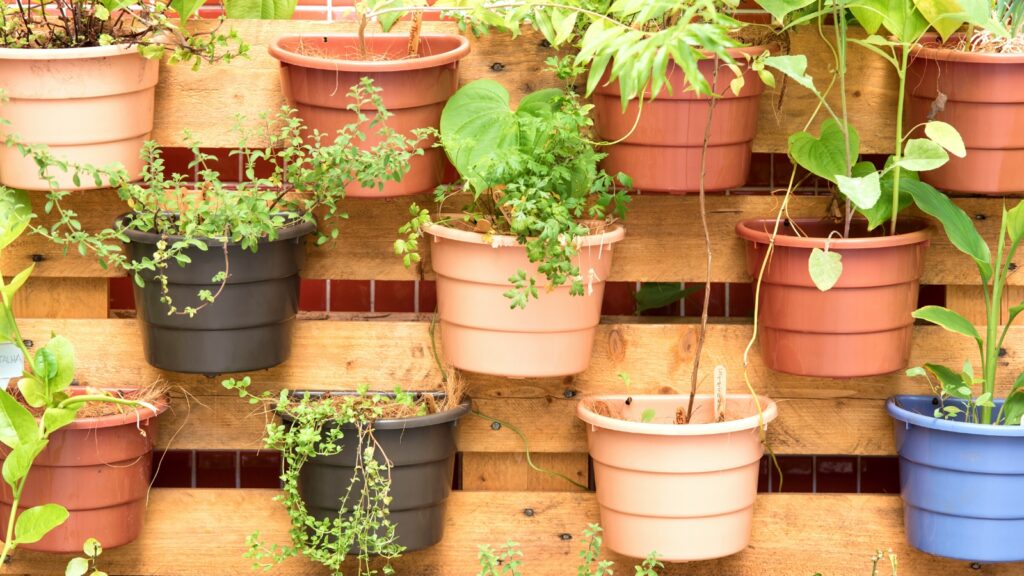
This image is property of www.epicgardening.com.
Maintaining Vertical Gardens
To ensure the longevity and vitality of your vertical garden, regular maintenance is essential. Here are some key tasks to include in your maintenance routine:
Pruning and Trimming Plants for Optimum Growth
Regular pruning and trimming help maintain the shape and health of your vertical garden. Remove any dead or damaged foliage, as well as any excessive growth that may overshadow neighboring plants. Pruning encourages new growth and helps prevent diseases by improving air circulation and sunlight exposure.
Regularly Checking and Adjusting Plant Supports
As your plants grow, it’s important to regularly check and adjust the plant supports in your vertical garden. Some plants may require additional ties or stakes to provide adequate support or prevent them from leaning or falling over. Regularly inspecting and adjusting plant supports will help maintain the structural integrity of your vertical garden.
Cleaning and Maintaining the Vertical Gardening Structure
Like any structure, your vertical garden will require occasional cleaning and maintenance. Remove any debris or dead leaves that may accumulate in the planters or on the structure itself. Clean the planters and supports with mild soap and water to prevent the buildup of dirt or algae. Regular maintenance will keep your vertical garden looking fresh and vibrant.
Replacing and Refreshing Plants as Needed
Plants have a natural lifecycle, and over time, you may need to replace or refresh plants in your vertical garden. Some plants may become too large or overcrowded, while others may decline or finish their growing season. By replacing and refreshing plants as needed, you can ensure a continuous display of healthy and thriving vegetation in your vertical garden.
Enhancing Vertical Garden Aesthetics
In addition to the practical benefits of vertical gardening, it also offers the opportunity to create visually stunning displays. Here are some ways to enhance the aesthetics of your vertical garden:
Utilizing Colorful and Visually Appealing Plant Combinations
Choose a variety of plants with different colors, textures, and sizes to create a visually appealing vertical garden. Consider combining flowering plants with foliage plants to add pops of vibrant colors. Experiment with different combinations to create a visually striking display that complements your personal style and preferences.
Incorporating Hanging Baskets and Cascading Plants
Hanging baskets and cascading plants add a unique visual element to your vertical garden. These plants naturally drape or hang down, creating a cascading effect that adds depth and dimension to your garden. Choose trailing plants such as ivy, ferns, or petunias to create a lush and eye-catching display.
Adding Decorative Elements and Artwork to the Vertical Garden
To personalize your vertical garden, consider adding decorative elements or artwork. Hang small ornaments, wind chimes, or colorful flags to add whimsy and interest to your garden. You can also incorporate trellises or other structures that feature artistic designs, creating a focal point or adding a touch of elegance to your vertical garden.
Choosing Unique and Eye-Catching Planters
The choice of planters can greatly enhance the aesthetics of your vertical garden. Instead of traditional terra cotta pots, consider using unique and eye-catching planters such as repurposed containers, vintage buckets, or colorful ceramic pots. These one-of-a-kind planters will add personality and charm to your vertical garden.
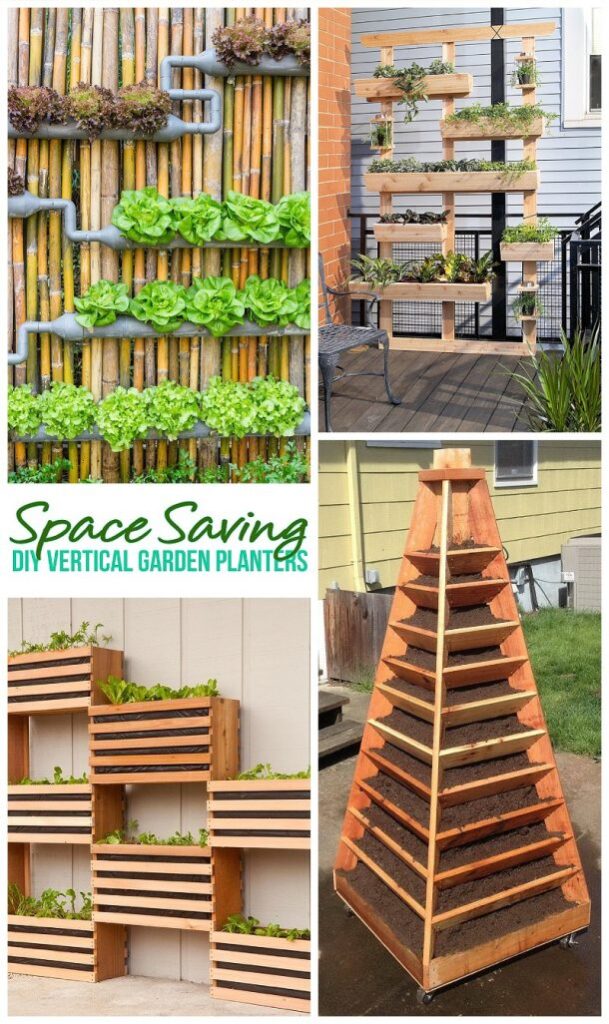
This image is property of dreamingindiy.com.
Harvesting and Utilizing Vertical Garden Produce
One of the joys of vertical gardening is the ability to harvest and enjoy the fruits of your labor. Here are some tips for harvesting and utilizing the produce from your vertical garden:
Determine the Optimal Time for Harvesting Vegetables and Fruits
Each vegetable and fruit has its own optimal harvesting time. It’s important to research and understand when your plants are ready for harvest. This will ensure that you pick them at the peak of their flavor and nutritional value. Harvesting at the right time will also encourage continuous production throughout the growing season.
Using Harvested Produce in Creative Recipes
Freshly harvested produce from your vertical garden is perfect for incorporating into creative and delicious recipes. From salads and stir-fries to homemade salsas and pesto, the possibilities are endless. Get inspired by seasonal ingredients and experiment with different flavors and combinations to make the most of your vertical garden bounty.
Preserving Excess Produce through Canning or Pickling
If you find yourself with an abundance of produce from your vertical garden, consider preserving it through canning or pickling. Canning allows you to store fruits and vegetables for longer periods, retaining their flavors and nutritional value. Pickling is another popular method that adds tangy and flavorful elements to your harvest. These preservation techniques can help you enjoy your vertical garden produce throughout the year.
Sharing Surplus Harvest with Friends and Neighbors
Vertical gardens often produce more than one person can consume. Instead of letting the excess go to waste, consider sharing your surplus harvest with friends, family, neighbors, or local food banks and community organizations. Not only does this help reduce food waste, but it also fosters a sense of community and encourages others to embrace the joys of fresh and homegrown produce.
Conclusion
Vertical gardening offers a multitude of benefits, from maximizing space to adding beauty and functionality to your living environment. By choosing the right plants, creating a suitable structure, optimizing watering and irrigation, managing soil and fertilization, dealing with pests and diseases, maintaining the garden, enhancing aesthetics, and enjoying the fruits of your labor, you can create a thriving and visually striking vertical garden. So roll up your sleeves, get creative, and start enjoying all the rewards that vertical gardening has to offer. Happy gardening!

